Richard A. Gabriel





In Memoriam
Steven Charles Krantz
father, husband, brother, teacher, musician and son-a very good man indeed
CONTENTS
IX
XI
1 1
ILLUSTRATIONS
FIGURES
1.1 Chinese Portrayal of Subotai 18
2.1 Table of Organization of the Mongol Army 27
2.2 Mongol Heavy Cavalryman 33
2.3 Mongol Light Cavalryman 34
2.4 Mongol Weapons 35
2.5 Mongol Field Army on the March 40
2.6 Mongol Siege Machinery 41
2.7 Mongol Tulughama Maneuver 45
MAPS
3.1 Mongolia and Surrounding States, 1206 48
3.2 Mongol Campaigns in China, 1211-1215 52
3.3 The War against the Chin: Initial Phase, 121 1-1215 57
3.4 Subotai's Attack on Kai-feng-fu 64
4.1 The Mongol Campaign against the Shah, 1220 81
4.2 The Pursuit of Mohammed Shah, 1220-1221 84
5.1 The Mongol Theater of Operations 91
5.2 First Battle of the Kura Plain 92
5.3 Second Battle of the Kura Plain 95
5.4 Battle of the Kalka River 101
5.5 Route of Subotai's Cavalry Raid 103
6.1 Subotal's European Campaign, 1240-1242 1 1 1
6.2 Battle of Liegnitz, 1241 114
6.3 Battle of the Sajo River: Subotai's Night Crossing 124
6.4 Battle of the Sajo River: Subotai's Flank Attack 125
PREFACE
 great- est generals in ancient military history. He was surely the equal of Han- ubotai bagatur, that is to say, Subotai the Valiant, was one of the nibal and Scipio in tactical brilliance, and stands with Alexander and Caesar as a strategist. He commanded armies whose size, scale, and scope of operations surpassed most of those of the ancient world. Under his leadership and direction, Mongol armies moved faster and over longer distances with a greater scope of maneuver than any armies had done before. The Muslim chroniclers tell us that when he died at age seventy-three, Subotai "had conquered thirty-two nations and won sixty-five pitched battles." His fame was such that after his death both his Chinese and Muslim enemies erected monuments to him. Indeed, had there been no Subotai the Valiant, there would have been no Mongol conquest of Korea, China, Persia, and Russia-nor of Hungary, the conquest of which by Subotai's armies destroyed every remaining military force standing between the Mongol advance and Europe. Had not the Great Khan died (an event that required the Mongol armies and their princes to return to Mongolia to elect a successor), there is every likelihood that Subotai would have destroyed Europe itself!
great- est generals in ancient military history. He was surely the equal of Han- ubotai bagatur, that is to say, Subotai the Valiant, was one of the nibal and Scipio in tactical brilliance, and stands with Alexander and Caesar as a strategist. He commanded armies whose size, scale, and scope of operations surpassed most of those of the ancient world. Under his leadership and direction, Mongol armies moved faster and over longer distances with a greater scope of maneuver than any armies had done before. The Muslim chroniclers tell us that when he died at age seventy-three, Subotai "had conquered thirty-two nations and won sixty-five pitched battles." His fame was such that after his death both his Chinese and Muslim enemies erected monuments to him. Indeed, had there been no Subotai the Valiant, there would have been no Mongol conquest of Korea, China, Persia, and Russia-nor of Hungary, the conquest of which by Subotai's armies destroyed every remaining military force standing between the Mongol advance and Europe. Had not the Great Khan died (an event that required the Mongol armies and their princes to return to Mongolia to elect a successor), there is every likelihood that Subotai would have destroyed Europe itself!
It is surprising, therefore, that Subotai remains almost unknown in the West for the great strategist and tactical genius that he was. Although Giovanni di Plano Carpini wrote an account of the Mongol army, its equipment, and its tactics in 1248 as a result of his visit to the Mongol court, this work appears to have had no influence whatsoever on European military thought or practice. Nor did the writings of Marco Polo. Jean Pierre Abel Remusat, writing in 1829, offered a nine-page "biography" of Subotai in the form of a translation of a Chinese record. Hans Delbruck's magnificent work, The History of the Art of War, fails to mention the Mongols at all. As far as I can tell, the first modern military historian to write an analysis of Mongol military practice that included some treatment of Subotai's campaigns was the Russian Lieutenant General Mikhail I. Ivanin (1801-1874). Given the Russian experience with the Mongol and Turkic tribes in Central Asia at the time, the work was immediately recognized as an important contribution to military thought. The book and the study of Mongol military methods were incorporated into the curriculum of the Imperial Military Academy and other (Soviet) military schools until after World War II. In the West proper, however, military historians and practitioners virtually ignored Mongol military history and remained ignorant of the achievements of its greatest general, Subotai. In 1927, Sir Basil H. Liddell-Hart devoted a chapter of his Great Captains Unveiled to Genghis Khan in which he offers a sketch of Subotai's achievements. Henry Morel, a French military historian, authored an article on the Mongols in 1922, and in 1932, a Canadian officer contributed a small monograph on the subject in which Subotai is mentioned in passing. Thus, one of the greatest generals in all history has remained almost completely unknown in the West.
Subotai the Valiant is, therefore, the first attempt at a military biography of the great general to be published in the West. In the attempt, I have relied primarily upon English translations of Arabic, Persian, Chinese, and French sources for my information. Using English translations of The Secret History of the Mongols as well, I have sought in one way or another to incorporate every piece of information that can reasonably be garnered from the original sources. I have also used such bits and pieces about Subotai as are to be found scattered in secondary sources to assemble as complete a portrait of this great general as the information itself will permit. Even if my effort has fallen short, there is now, at the minimum, a single source to which students of Mongol and military history may turn to learn more about one of history's superb field commanders. For Subotai is more than a historical figure; his legacy is, in fact, living history. For much of the theory and practice of modern military operations was first used by Subotai and his Mongol armies. The modern emphasis on speed, maneuver, surprise, envelopment, the rear battle, deep battle, and the battle of annihilation all first emerged as an identifiable tactical skill set in the campaigns of Subotai. In this sense, it can he said that those who would master today's battles would do well first to study the battles of the past.
1 SUBOTAI THE VALIANT
 he old blacksmith and his two sons struggled through the knee-deep snow, making their way down the steep mountainside toward Temujin's camp. The three of them had come a long way from the dark forest of the taiga west of Lake Baikal that was their home. Up ahead, within sight, was the tree line, where the snow gave way to bare ground and rock. Another few li and they would reach the steppe itself, where the spring temperatures had already begun to turn the Mongolian plain green with new grass. It was spring, the time of year when the Mongol clans left their winter camps in the mountains and drove their horse herds down to the steppes, where the half-starved animals that had survived the brutal Mongolian winter could eat their fill and replenish their bodies. It would take at least a month before the horses were healthy enough to permit their use in that favorite Mongol pastime: war.
he old blacksmith and his two sons struggled through the knee-deep snow, making their way down the steep mountainside toward Temujin's camp. The three of them had come a long way from the dark forest of the taiga west of Lake Baikal that was their home. Up ahead, within sight, was the tree line, where the snow gave way to bare ground and rock. Another few li and they would reach the steppe itself, where the spring temperatures had already begun to turn the Mongolian plain green with new grass. It was spring, the time of year when the Mongol clans left their winter camps in the mountains and drove their horse herds down to the steppes, where the half-starved animals that had survived the brutal Mongolian winter could eat their fill and replenish their bodies. It would take at least a month before the horses were healthy enough to permit their use in that favorite Mongol pastime: war.
The old man's name was Jarchigudai. He was an Uriangkhai, one of the forest tribes that lived in the mountains and thick forests north of the Mongolian steppe. Twenty years ago, he had made this same journey. Then he had conic with his first-born son, Jelme, now a strapping young man of eighteen summers. Jarchigudai had been a blacksmith then, as he still was, and he carried his blacksmith's bellows on his back when he came to see Yesugei, the warrior and heir to the Mongol dynasty that had once ruled all the Mongol clans. He had come then to offer Yesugei his first-born as his servant. Yesugei had been camped at Deligun Hill on the Onan River, where his wife had presented him with a son of his own.' Yesugei had named his first-born, Temujin, after a brave warrior that Yesugei had slain in one of the interminable battles between the clans. Jarchigudai's son had then also been an infant, having been born in the same month as Temujin. Yesugei had welcomed Jarchigudai's gift with gratitude, but feared that his wife could not care properly for two infants. So he had sent the blacksmith away with the promise that when Jelme had grown to be a man, Yesugei would welcome him into his service. So Jarchigudai the blacksmith returned to his people in the forest where, over the years, he had plied his trade as Jelme had grown to manhood. During this time, Jarchigudai's wife had given him another son, but the effort had killed her, and Jarchigudai was alone in the world, except for his two boys.

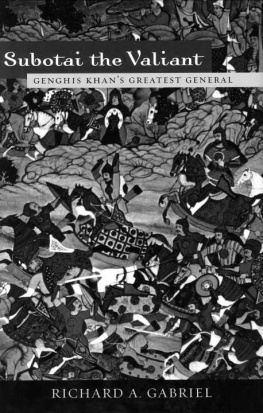
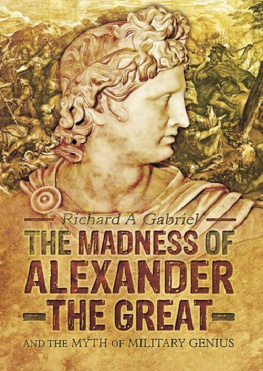
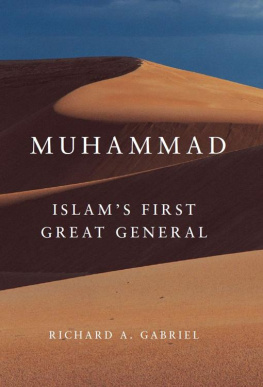

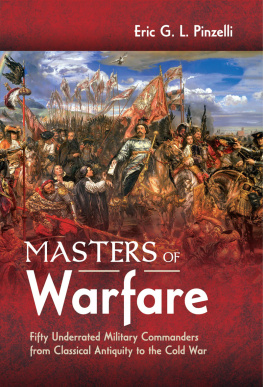
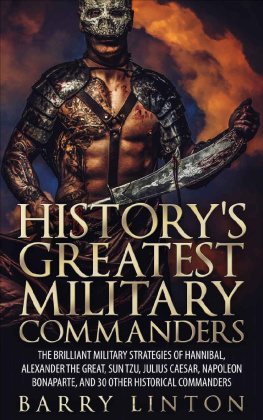
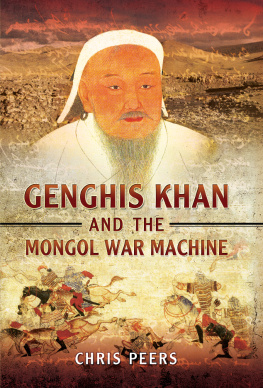
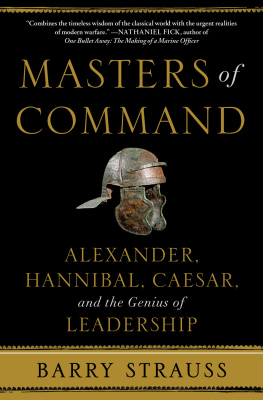
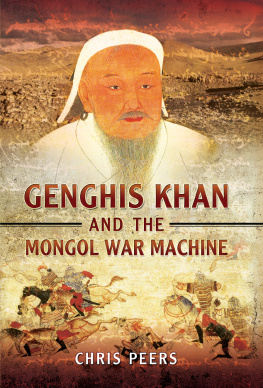
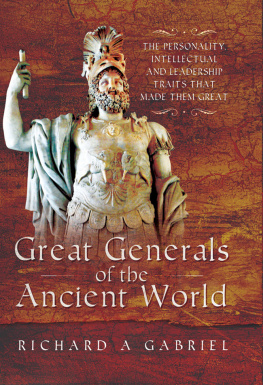
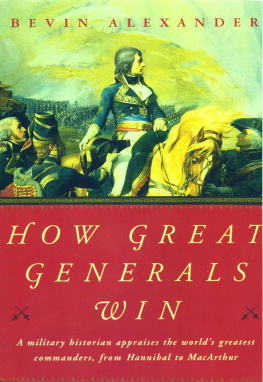

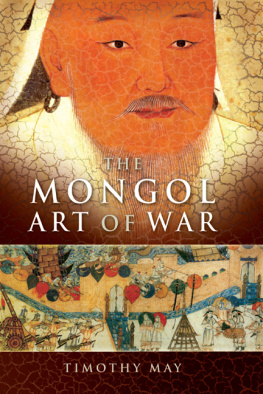

 great- est generals in ancient military history. He was surely the equal of Han- ubotai bagatur, that is to say, Subotai the Valiant, was one of the nibal and Scipio in tactical brilliance, and stands with Alexander and Caesar as a strategist. He commanded armies whose size, scale, and scope of operations surpassed most of those of the ancient world. Under his leadership and direction, Mongol armies moved faster and over longer distances with a greater scope of maneuver than any armies had done before. The Muslim chroniclers tell us that when he died at age seventy-three, Subotai "had conquered thirty-two nations and won sixty-five pitched battles." His fame was such that after his death both his Chinese and Muslim enemies erected monuments to him. Indeed, had there been no Subotai the Valiant, there would have been no Mongol conquest of Korea, China, Persia, and Russia-nor of Hungary, the conquest of which by Subotai's armies destroyed every remaining military force standing between the Mongol advance and Europe. Had not the Great Khan died (an event that required the Mongol armies and their princes to return to Mongolia to elect a successor), there is every likelihood that Subotai would have destroyed Europe itself!
great- est generals in ancient military history. He was surely the equal of Han- ubotai bagatur, that is to say, Subotai the Valiant, was one of the nibal and Scipio in tactical brilliance, and stands with Alexander and Caesar as a strategist. He commanded armies whose size, scale, and scope of operations surpassed most of those of the ancient world. Under his leadership and direction, Mongol armies moved faster and over longer distances with a greater scope of maneuver than any armies had done before. The Muslim chroniclers tell us that when he died at age seventy-three, Subotai "had conquered thirty-two nations and won sixty-five pitched battles." His fame was such that after his death both his Chinese and Muslim enemies erected monuments to him. Indeed, had there been no Subotai the Valiant, there would have been no Mongol conquest of Korea, China, Persia, and Russia-nor of Hungary, the conquest of which by Subotai's armies destroyed every remaining military force standing between the Mongol advance and Europe. Had not the Great Khan died (an event that required the Mongol armies and their princes to return to Mongolia to elect a successor), there is every likelihood that Subotai would have destroyed Europe itself! he old blacksmith and his two sons struggled through the knee-deep snow, making their way down the steep mountainside toward Temujin's camp. The three of them had come a long way from the dark forest of the taiga west of Lake Baikal that was their home. Up ahead, within sight, was the tree line, where the snow gave way to bare ground and rock. Another few li and they would reach the steppe itself, where the spring temperatures had already begun to turn the Mongolian plain green with new grass. It was spring, the time of year when the Mongol clans left their winter camps in the mountains and drove their horse herds down to the steppes, where the half-starved animals that had survived the brutal Mongolian winter could eat their fill and replenish their bodies. It would take at least a month before the horses were healthy enough to permit their use in that favorite Mongol pastime: war.
he old blacksmith and his two sons struggled through the knee-deep snow, making their way down the steep mountainside toward Temujin's camp. The three of them had come a long way from the dark forest of the taiga west of Lake Baikal that was their home. Up ahead, within sight, was the tree line, where the snow gave way to bare ground and rock. Another few li and they would reach the steppe itself, where the spring temperatures had already begun to turn the Mongolian plain green with new grass. It was spring, the time of year when the Mongol clans left their winter camps in the mountains and drove their horse herds down to the steppes, where the half-starved animals that had survived the brutal Mongolian winter could eat their fill and replenish their bodies. It would take at least a month before the horses were healthy enough to permit their use in that favorite Mongol pastime: war.